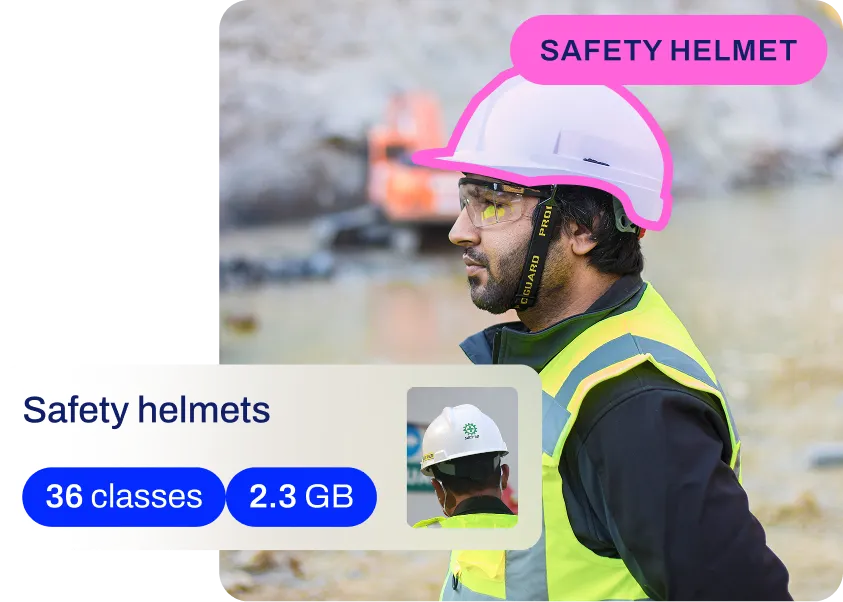Model Weights
Discover the importance of model weights in machine learning, their role in predictions, and how Ultralytics YOLO simplifies their use for AI tasks.
Model weights are the fundamental, learnable parameters within a
neural network that transform input data into
meaningful predictions. Functioning similarly to the strength of synapses in a biological brain, these numerical
values determine how much influence a specific input feature has on the network's output. When a model processes
information, such as an image or text, the input data is multiplied by these weights layer by layer. The final
combination of these weighted signals produces the result, whether it is
image classification, language translation, or
identifying objects in a video stream.
How Model Weights Are Learned
Weights are not static; they are dynamic values refined during the
training process. Initially, a model starts with random
weights, meaning its predictions are essentially guesses. Through a cycle known as
supervised learning, the model compares its
predictions against a labeled training dataset. A
mathematical formula called a
loss function calculates the error—the difference
between the prediction and the actual truth.
To minimize this error, the model employs an
optimization algorithm, such as
Stochastic Gradient Descent (SGD)
or Adam. This algorithm computes gradients via
backpropagation to determine exactly how each
weight should be adjusted—either increased or decreased—to reduce the error in the next iteration. This cycle repeats
over many epochs until the weights converge to an optimal
state where the model achieves high accuracy.
Differentiating Key Concepts
To understand model weights fully, it is helpful to distinguish them from related terms in
machine learning:
-
Biases: While weights control the steepness or scale of the transformation, biases allow the activation function to be
shifted left or right. Together, weights and biases enable the network to fit complex, non-linear data patterns.
-
Hyperparameters: Weights are learned from data, whereas hyperparameters are structural settings configured
before training begins. Examples include the
learning rate,
batch size, and the number of layers in the network.
-
Model Architecture: The architecture acts as the blueprint or skeleton of the network (e.g., ResNet or a Transformer), defining how
neurons connect. The weights are the specific values stored within that structure.
The Power of Transfer Learning
Training a model from scratch requires massive datasets and significant
computational resources. To solve this, developers often use pre-trained weights. This involves taking a model like
YOLO11, which has already learned rich feature
representations from a large dataset like COCO, and applying it to a new
problem.
This technique, known as transfer learning,
allows users to fine-tune the model on a smaller,
custom dataset. The pre-trained weights provide a "head start," enabling the model to recognize edges,
textures, and shapes immediately, leading to faster training and better performance.
The following Python snippet demonstrates how to load specific pre-trained weights into a YOLO11 model for immediate
object detection.
from ultralytics import YOLO
# Load the YOLO11 model with pre-trained weights (learned on COCO)
model = YOLO("yolo11n.pt")
# Run inference on an image using the loaded weights
# The weights determine the model's ability to recognize the bus
results = model("https://ultralytics.com/images/bus.jpg")
# Display the resulting bounding boxes and classes
results[0].show()
Real-World Applications
The practical utility of optimized model weights is evident across various industries where
AI solutions are deployed:
-
AI in Healthcare: Radiologists use models with weights fine-tuned on medical imagery to assist in diagnosis. For example, a model
can identify brain tumors in MRI scans. The
weights in this specific model have learned to distinguish the subtle textural differences between healthy tissue
and anomalies, providing a second opinion that increases diagnostic confidence.
-
Smart Retail Systems: Retailers utilize computer vision to
automate checkout processes. A camera system equipped with model weights trained on product packaging can instantly
recognize items placed on a counter. This application relies on the weights' ability to map visual inputs—like a
cereal box's color and logo—to the correct product SKU for
inventory management.
Future of Model Weights
As research progresses, the way weights are handled continues to evolve. Techniques like
model quantization reduce the precision of
weights (e.g., from 32-bit float to 8-bit integer) to decrease file size and speed up inference on
edge devices without significantly sacrificing accuracy.
Furthermore, upcoming architectures like YOLO26 aim to
produce models that are natively more efficient, ensuring that the learned weights provide the highest possible
performance per parameter.
Efficient management of these files is also critical. Platforms like the
Ultralytics Platform allow teams to version, track, and deploy their model
weights seamlessly, ensuring that the best-performing version of a model is always the one in production.












